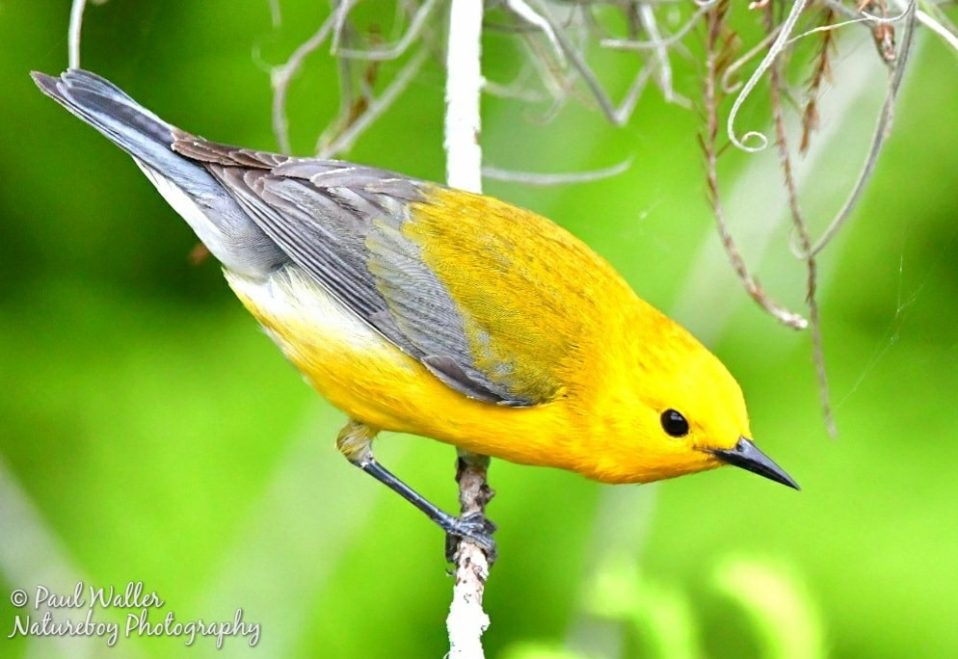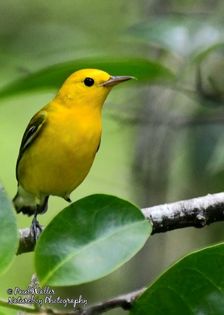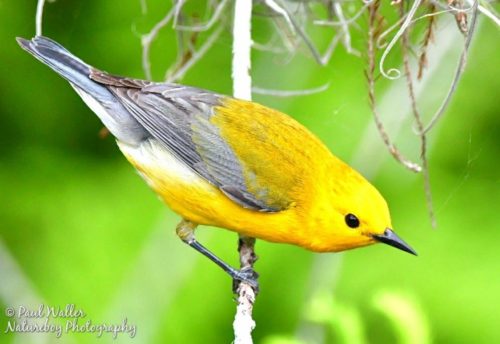Prothonotary Warbler
The radiant golden Prothonotary Warbler, Protonotaria citrea, is a delight to see as it hops among the low branches in the dark understories of shaded swamps. It has bluish-gray wings and tail, white under the tail, olive-yellow back, and black beady eyes. Females are a bit paler than males.
Prothonotary Warblers, also known as swamp warblers, breed in swamps, flooded forests, and woods near lakes and streams. They are one of only two warblers who build their nests in abandoned chickadee and woodpecker holes. Courtship begins in April when the males arrive in Florida. After quite a display of courtship, the male will place moss in the nesting cavity. The female will build the nest of leaves, bark, and moss before incubating 3 – 7 eggs for 12 -14 days. Both parents feed the young for 9- 10 days when they are ready to leave the nest. Prothonotary Warblers produce 1 – 3 broods each year.
Aquatic insects make up most of the warblers’ diet. Prothonotary Warblers forage on shores and above standing or slow-moving water. They also dine on spiders and insects including butterflies, beetles, flies, caterpillars, grasshoppers, ants, as well as seeds and fruit.
Migration begins in early fall to their winter homes in Central or northern South America.
Prothonotary Warblers are a species of concern. Their population is declining due to the loss and alteration of forested wetlands. Snakes and raccoons are nest predators. Restoring forested wetlands where natural flooding occurs has proven successful in increasing populations. Nest boxes with predator guards protect the eggs from predators.
Connect. Respect. Coexist.




Recent Comments